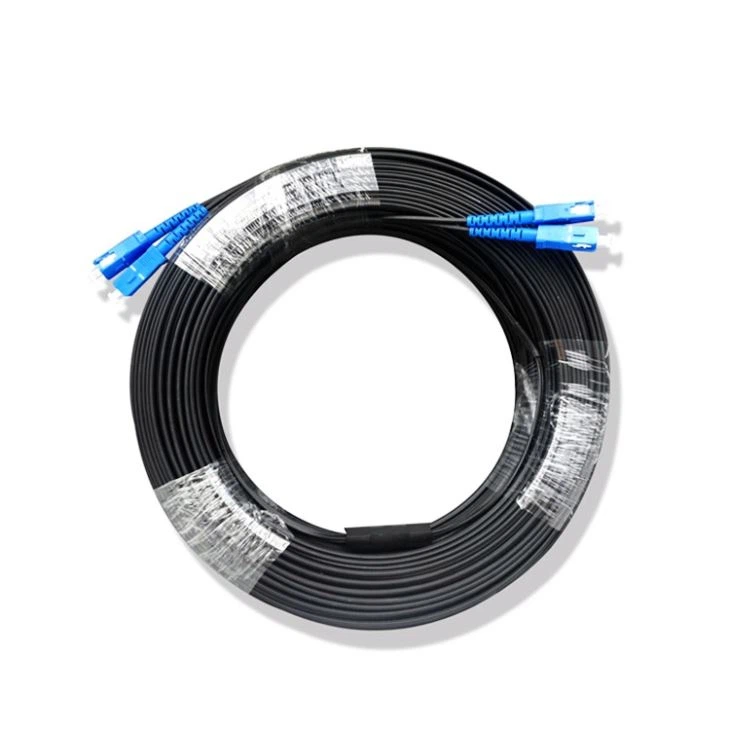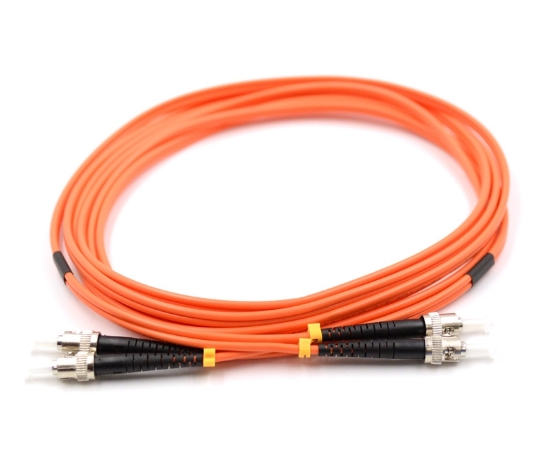2024 Guide: Understanding the Cost-Effectiveness of Patch Cable and LSZH Cables

Unveiling Modern Cable Solutions
In this guide, we will uncover the cost-effectiveness of contemporary cable assembly solutions, including patch cables and LSZH cables. We'll explore the advantages of these modern fiber optic patch cords and their impact on best practices for fiber optic installation. These innovative cable solutions play a crucial role in ensuring efficient and reliable network connectivity, making it essential to understand their benefits and applications in modern networking setups. Let's delve into the details to gain a comprehensive understanding of these advanced cable options.
Cost-Effectiveness of Patch Cable
Cost-Effective Nature of Patch Cables
Patch cables, also known as patch cords or fiber jumpers, are highly regarded for their cost-effective nature in delivering high-performance connectivity. Their affordability and reliability make them a preferred choice in modern networking setups. The efficient transmission of data signals through these cables ensures seamless connectivity without compromising on performance.
Versatile Application in Modern Networks
Patch cables play a pivotal role in various networking environments, including data centers, LANs, and telecommunication networks. Their cost-effectiveness and versatility make them an essential component of modern network infrastructures. Whether it's for connecting network devices or establishing reliable data connections, patch cables offer a flexible and efficient solution for diverse networking needs.
In summary: Patch cables provide a cost-effective and versatile solution for high-performance connectivity across various modern networking environments.
Advantages of LSZH Cables
Safety and Environmental Impact
When it comes to safety and the environment, LSZH cables stand out as a superior alternative to traditional cables. Their low smoke and zero halogen properties make them an ideal choice for confined spaces and critical installations. In the event of a fire, these cables emit minimal smoke, reducing the risk of toxic fume inhalation. Additionally, their zero halogen composition minimizes the release of harmful chemicals into the environment, making them environmentally friendly.
Regulatory Compliance and Long-Term Benefits
LSZH cables are designed to comply with stringent safety regulations, ensuring that they meet the highest standards for fire safety. This compliance not only reduces health risks but also contributes to long-term cost savings by minimizing maintenance expenses. The enhanced fire safety measures provided by LSZH cables make them a prudent choice for organizations prioritizing safety and sustainability in their network infrastructure.
LSZH cable usage is pivotal in ensuring both safety and environmental responsibility within modern networking environments.

Fiber Optic Installation Best Practices
Efficient Cable Routing and Management
When it comes to fiber optic installation best practices, efficient cable routing and management are paramount for ensuring optimal performance and longevity of the network infrastructure. Proper cable routing plays a crucial role in maintaining signal integrity and minimizing signal loss. By organizing cables effectively, the risk of signal interference or degradation is significantly reduced, thereby enhancing the overall efficiency of the network.
Implementing best practices in cable installation involves utilizing cable management tools such as trays, racks, and enclosures to neatly organize and secure the fiber optic cables. This not only ensures a tidy and well-organized cabling system but also facilitates easier maintenance and troubleshooting when necessary. Additionally, employing proper cable routing techniques minimizes the potential for accidental damage to the cables, contributing to their longevity and sustained performance.
Efficient cable routing and management are essential elements of fiber optic installation best practices, playing a pivotal role in maintaining signal integrity and optimizing network performance.
Adherence to Industry Standards
Adhering to industry standards and guidelines is fundamental in ensuring the reliability and efficiency of fiber optic installations. Compliance with established standards not only guarantees the quality of the installation but also ensures compatibility with other networking components. By following industry best practices, errors are minimized, and the seamless integration of modern cable solutions into existing network infrastructures is achieved.
Industry standards provide a framework for consistent quality across fiber optic installations, covering aspects such as cable types, connectors, splicing techniques, and testing procedures. This adherence not only promotes uniformity but also facilitates interoperability between different systems within an organization or across various locations. Ultimately, strict adherence to industry standards fosters an environment of reliability, consistency, and efficiency in fiber optic installations.
Adhering to industry standards is crucial for ensuring the reliability, compatibility, and seamless integration of modern cable solutions within network infrastructures.
Differences in Cable Options
Modern Cable Solutions vs. Traditional Cables
In comparing modern cable solutions with traditional fiber optic cables, it becomes evident that modern patch cable and LSZH options offer significant advantages. Modern cables are designed to meet the evolving needs of network infrastructures, providing enhanced performance, safety, and cost-effectiveness compared to their traditional counterparts. The utilization of advanced materials and manufacturing processes allows modern cables to deliver superior connectivity while addressing critical safety and environmental concerns.
The transition from traditional cables to modern alternatives represents a strategic shift towards optimizing network efficiency and operational costs. Organizations evaluating their cable choices need to consider the long-term benefits offered by modern cable solutions. By understanding the differences in performance, safety features, and cost-effectiveness between these options, informed decisions can be made to support the seamless integration of advanced cable solutions into existing network infrastructures.
Impact on Network Efficiency
The choice between modern and traditional cables directly impacts network efficiency and operational costs. Modern cable options provide improved signal integrity, reduced maintenance requirements, and enhanced safety measures, contributing to overall network reliability and performance. Assessing the differences empowers organizations to make informed choices that align with their specific networking needs while ensuring efficient and sustainable infrastructure.
Cable Options play a crucial role in determining the overall efficiency and reliability of network infrastructures.
The Value of Patch Cable in 2024
Significance of Patch Cable Solutions
In the rapidly evolving landscape of network infrastructure, the value of patch cable solutions in 2024 cannot be overstated. These innovative cable assemblies play a pivotal role in ensuring seamless connectivity and efficient data transmission within modern networking environments. By providing a reliable and cost-effective means of establishing connections, fiber optic patch cords and fiber jumpers contribute to the overall performance and reliability of network infrastructures.
Adapting to Technological Advancements
As technology continues to advance, the demand for high-performance connectivity solutions grows exponentially. Patch cables are well-positioned to meet these evolving demands by offering versatile and efficient connectivity options for various networking setups. Their adaptability to different environments makes them indispensable components in the ever-changing landscape of network infrastructure.
Conclusion
In conclusion, the significance of patch cable solutions lies in their ability to deliver cost-effective, reliable, and versatile connectivity within modern network infrastructures. As organizations navigate the complexities of network connectivity, understanding the value and practical applications of patch cables is essential for optimizing performance and meeting the dynamic needs of contemporary networking environments.
See Also
Exploring Fiber Optic Network Components: FTTX Fiber Pigtai and Connectors
Unveiling the Advantages of 19-Core Fiber Optic Cabling in Telecommunication Networks
ADSS Cable vs. Other Fiber Optic Cables: A Comprehensive Comparison
Understanding Different Types of Fiber Optic Adapters: A Comprehensive Guide
Demystifying Fiber Optic Attenuators: Understanding MPO and APC Polishing
About US
Follow Us
AnetFiber company's main products are indoor and outdoor optical fiber cables, outdoor waterproof pre-connected fiber-to-the-home products, PLC optical fiber splitters, optical fiber jumpers and pigtails, MTP®/MPO high-density big data product solutions, optical fiber field quick connectors and research and development molding, injection molding and production of optical fiber distribution boxes, optical fiber chassis cabinets, the market has expanded to the world, Europe, America, Asia, the Middle East and Latin America.
Address
Shenzhen City, Baoan District, Yanluo Street, Tangxiayong Community, Yangyong Industrial Road, Tonggangda New Energy Vehicle Park 406
Contacts
+86 199 2655 3586

